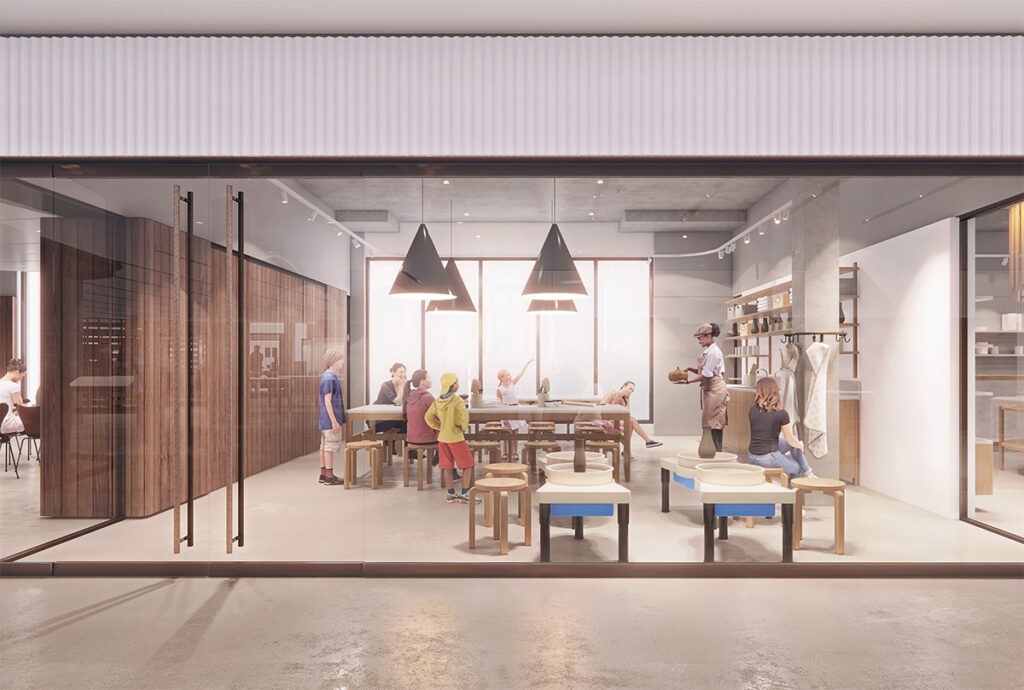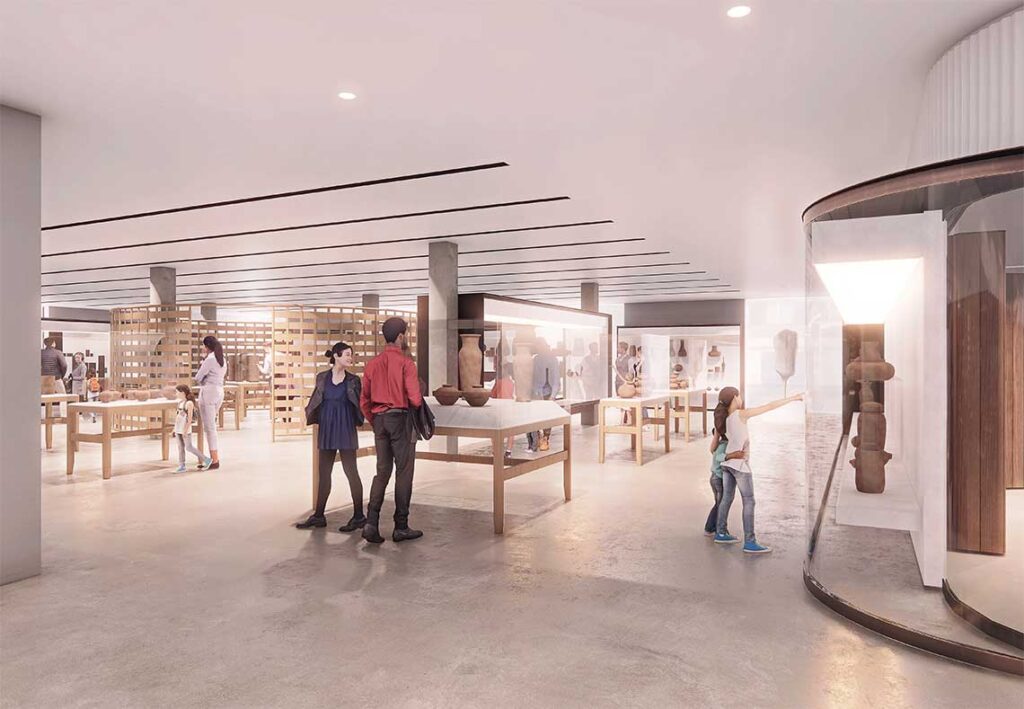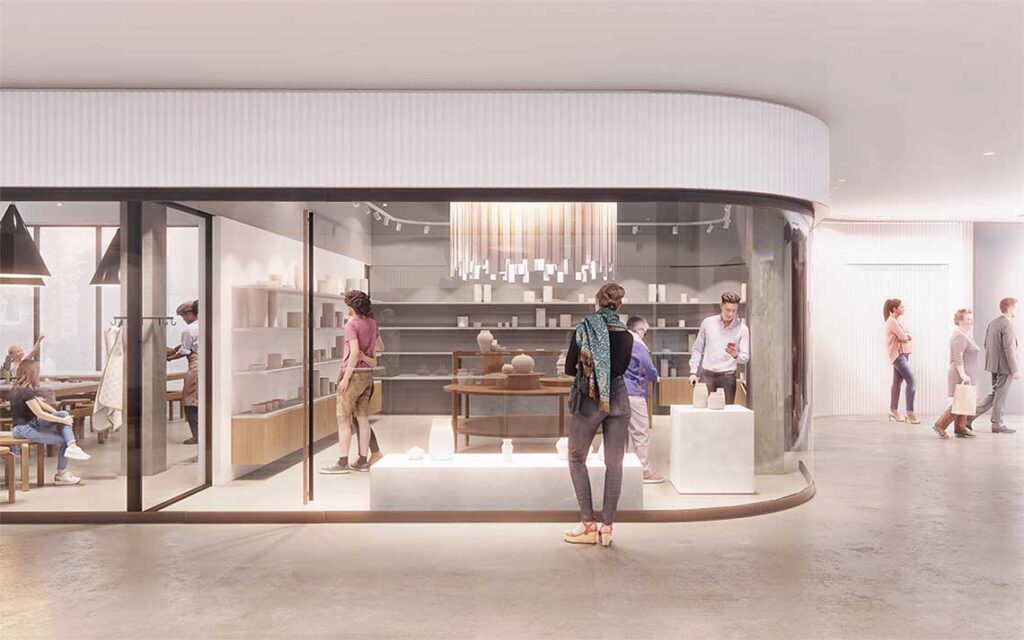Gardiner Museum receives $9-million gift from The Radlett Foundation in honour of the late William B.G. Humphries to fund major transformation
Full-scale reimagining of the ground floor prioritizes connectivity, access, and Indigeneity
Toronto—The Gardiner Museum is excited to announce a transformational $9 million donation from The Radlett Foundation in honour of the late William B.G. Humphries, who established the Foundation, reflecting his lifelong commitment to the collection and presentation of ceramics, and his support of Indigenous communities through the arts. This gift is the largest in the Museum’s history by an individual other than its founders, George and Helen Gardiner. The Foundation’s gift also includes more than 250 objects from Mr. Humphries’s collection of ceramics and decorative arts, with a focus on 18th-century English porcelain. These objects will join 62 pieces previously donated by Mr. Humphries to the Gardiner Museum during his lifetime.
This generous philanthropic contribution will be the catalyst for a full-scale reimagining of the Gardiner Museum’s ground floor, led by Montgomery Sisam Architects and Andrew Jones Design, and guided by the principles of connectivity, access, and Indigeneity. This includes the construction of a new fully equipped makerspace, a community engagement centre, and an Indigenous gallery space.
“The Gardiner Museum has been presented with a once-in-a-generation opportunity to bring our physical space in line with our mission to build community with clay,” said Gabrielle Peacock, Executive Director & CEO of the Gardiner Museum. “The Radlett Foundation’s transformational gift will ensure the Gardiner Museum’s future as a vibrant community hub that welcomes all people and ignites a sense of creativity and wonder.”
“The addition of a gallery space dedicated to Indigenous ceramics will introduce a vital and currently underrepresented area of ceramics to the Museum, as well as furthering our commitment toward reconciliation as an institution,” said Dr. Sequoia Miller, Chief Curator & Deputy Director at the Gardiner Museum.
The prioritizing of Indigenous ceramics also reflects Mr. Humphries’s legacy of support for Indigenous communities, particularly in the final two decades of his life, through arts, education, and healthcare initiatives in Ontario. This included the founding and funding of the Ignite the Spirit of Education Foundation, now part of The Radlett Foundation.
An Indigenous gallery space will sit at the heart of the ground floor permanent collection galleries, which are being reimagined to centre Canadian and Indigenous stories and highlight connections between cultures and ceramic traditions across time and geographies. The Museum is seeking a Curator of Indigenous Ceramics who will lead the development and installation of the Indigenous gallery space. The Gardiner will also engage in consultation with its Indigenous partners and build new relationships with Indigenous cultural organizations throughout this process.
The Gardiner Museum would like to acknowledge the invaluable contributions of the Indigenous Advisory Circle in guiding this project: Mary Anne Barkhouse, Kent Monkman, Andre Morriseau, Duke Redbird, and Tekaronhiáhkhwa / Santee Smith.
“This project offers the Gardiner Museum a singular opportunity to transform both its physical space and the ways it engages with diverse audiences. The addition of a gallery of Indigenous ceramics at the centre of the Museum embodies the Gardiner’s commitment to working with communities to reflect and explore Indigenous cultural practices of the past and present,” said artist Kent Monkman, a member of the Gardiner Board and the Indigenous Advisory Circle.
The plans by Montgomery Sisam Architects and Andrew Jones Design for the 8,952-square-foot space integrate the warmth and tactility of clay into the fabric of the visitor experience, enhancing the principles of accessibility and inclusion that guide the Gardiner’s community-first approach to programming and curation. Flexible spaces for making and meeting, as well as innovative approaches to the display of objects, including open collections storage, will encourage discovery and hands-on creation.
The capital costs of the project are estimated to be $15 million, and construction is expected to begin in summer 2024. The Gardiner is in the early stages of a fundraising campaign that will invite its donors, partners, volunteers, and the broader community to be a part of this vision and transformation.
Visit gardinermuseum.com for more information.
The Gardiner Museum is situated on the ancestral and traditional territories of many nations, including the Anishnabeg, the Chippewa, the Haudenosaunee, and the Wendat peoples, and is covered by Treaty 13 with the Mississaugas of the Credit First Nation. It is now home to many diverse First Nations, Inuit, and Métis peoples. As a museum that celebrates the material of the earth, the Gardiner Museum is committed to honouring Indigenous peoples’ cultural and spiritual connections to the land. Reconciliation is central to our work as a museum, and we strive to celebrate Indigenous knowledge and creativity through our collections, exhibitions, and programming.
ABOUT THE RADLETT FOUNDATION
The Radlett Foundation was established by William B.G. (Bill) Humphries and has a long-standing relationship with the Gardiner Museum. Objects from the Radlett Collection are currently on display in the first and second-floor galleries, with a focus on 18th-century English porcelain. Following Mr. Humphries’s death on December 9, 2020, the Foundation donated more than 250 objects from Mr. Humphries’s collection of ceramics and decorative arts to the Gardiner Museum. The Radlett Foundation’s lead gift of $9-million is the catalyst for a full-scale reimagining of the Gardiner’s ground floor, with a gallery of Indigenous ceramics at its centre, a tribute to Mr. Humphries’s legacy of support for Indigenous communities.
ABOUT MONTGOMERY SISAM ARCHITECTS
Founded in 1978, Montgomery Sisam Architects is a mid-sized architectural firm based in Toronto, Ontario. It comprises a group of architects, designers, and technicians with diverse backgrounds, and a shared social consciousness. Montgomery Sisam’s process is grounded in a sense of responsibility to the public, driven by dialogue and research, and focused on social, economic, and environmental sustainability. Montgomery Sisam has developed a reputation for design leadership that is supported by over 80 provincial, national and international design awards.
montgomerysisam.com
ABOUT ANDREW JONES DESIGN
Andrew Jones is a Canadian designer who has worked for more than 25 years designing furniture and architectural interiors. Jones holds an MA in Furniture Design from the Royal College of Art in London and a degree in Architecture from University of Toronto. His designs for the public realm include the iconic pink umbrellas at Toronto’s award-winning Sugar Beach. In 2016, he designed the exhibition True Nordic: How Scandinavia Influenced Design in Canada, organized by the Gardiner Museum, and in 2019, he designed the Gardiner Museum’s Joan Courtois Gallery, which spans three floors of the Museum’s soaring stairwell.
andrewjonesdesign.com
ABOUT THE GARDINER MUSEUM
The Gardiner Museum brings together people of all ages and communities through the shared values of creativity, wonder, and community that clay and ceramic traditions inspire.
We engage audiences with exhibitions, programs, and hands-on classes, while stewarding a significant permanent collection. We interpret historical ceramics to emphasize their relevance today, and champion emerging and established Canadian artists and their role in the broader world. We innovate through clay education, as we bring together the experience of making with a deeper understanding of the art of ceramics.
We believe in making, looking, and thinking through clay.
The Gardiner Museum has a collection of over 5,000 objects from the Ancient Americas, Europe, Japan and China, as well as contemporary works with an emphasis on leading Canadian artists. The Gardiner Museum is among the few museums in the world focused on ceramics and is one of the world’s most notable specialty museums.
For more information, please visit: gardinermuseum.com.
-30-
Media Contact:
Rachel Weiner
Senior Manager, Marketing
Gardiner Museum
416.408.5062
[email protected]


